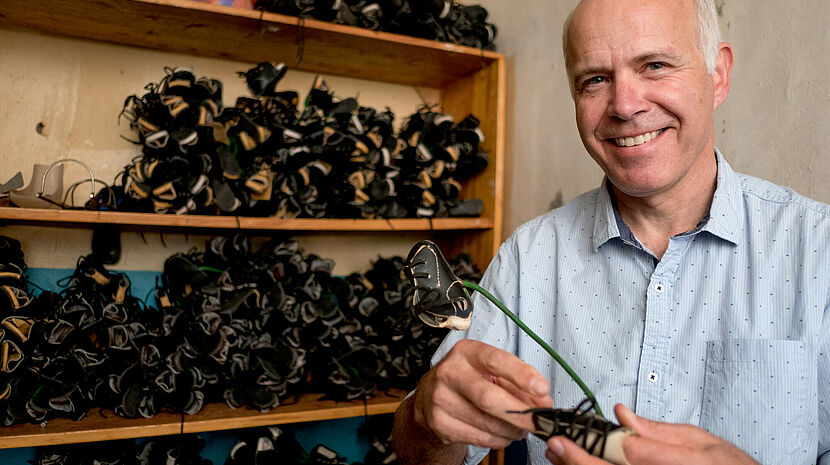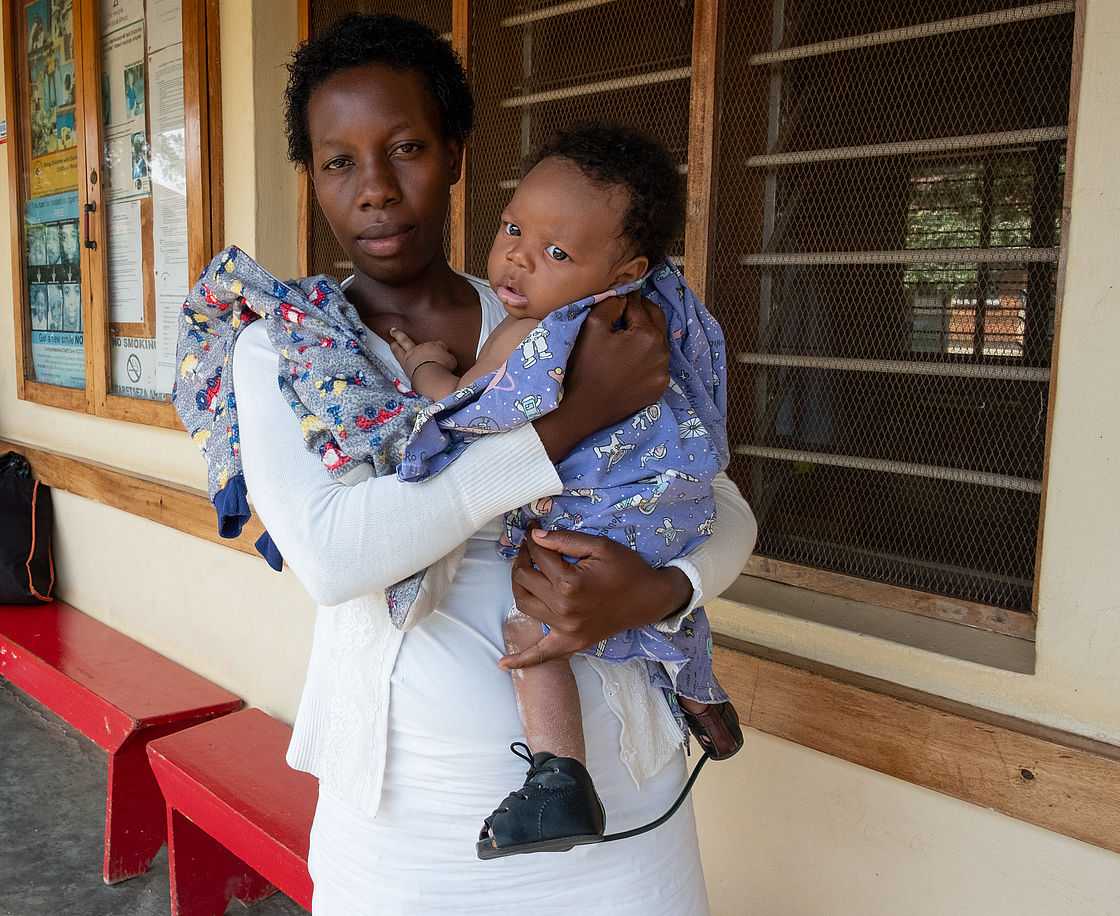A Conversation with Michiel Steenbeek:
Affordable Clubfoot Treatment in Africa

©CBM/Hayduk
Michiel Steenbeek has lived and worked for CBM in almost every country in East Africa. For over 30 years, the 63-year-old Dutch physiotherapist has been helping children with disabilities in Africa on behalf of CBM. In this interview, he talks about the current need and an invention he developed - the Steenbeek splint - which provides affordable treatment for clubfoot.
You yourself have already helped thousands of children with clubfoot - with your own invention. How did it come about?
Steenbeek: When I went to Africa as a physiotherapist, I was overwhelmed by the number of children who had clubfoot. But the therapy that was common at the time often didn't work well. That frustrated me.
At that time, Dr Ignacio Ponseti, a doctor in the US, developed a treatment method with a splint to correct clubfoot more effectively. But it had to be shipped to Africa. That made it too expensive. It also didn't fit the tiny feet of the babies I was treating, who were only a week old. So, I developed my own splint and sent it to Dr. Ponseti - and he liked it! The special thing about the Steenbeek splint is that it's made very cheaply and directly on site in Africa. Today, tens of thousands of these splints are used worldwide. As its inventor, I could be a multi-millionaire (laughs).
So why didn't you become a millionaire?
Steenbeek: CBM and I would have had to apply for a patent for every country in the world where CBM needed the splint. That would have been expensive and lengthy. But we needed the rail quickly! That's why I decided against it and have never regretted it. I want my invention to be copied to help many children! I put the building instructions online. To this day, developers from all over the world send me copies and ask me for advice. I hope this will continue - despite the current crisis!
You live and work in Uganda. Are you feeling the effects of the war in Ukraine there?
Steenbeek: Yes, I notice that prices are rising. For example, basic foodstuffs are becoming more expensive on the market in Uganda's capital Kampala, where my wife and I live. Transport is also becoming more expensive because the price of petrol is going up. There is a risk that patients will no longer be able to reach the clinics supported by CBM because of the high prices of buses or motorbike taxis. That would be a big problem!
What would be the consequence?
Steenbeek: That even more people wouldn't be treated in time and would have to live with a disability, although we could help! Already, far too many people don't make it to the clinics because they're too poor. At the same time, it's estimated that 180,000 children worldwide are born with club feet alone every year. They need our help.

Clubfoot patient Brandon Nuwajuka, (then 2 months old) at OURS hospital in Mbarara, Uganda. Brandon is wearing a Steenbeck foot brace.
CBM/ Hayduk